Vischering Castle in Lüdinghausen, North Rhine-Westphalia is the most typical moated castle in the Münster of Germany. This region has one of the highest German concentrations of castles, palaces and fortifications, Lüdinghausen having three by itself. The castle consists of outer defensive courtyard, defensive gateways, moat, drawbridge, main building and chapel. The sandstone walls, the red tile roofs as well as their reflection in the moat provide many harmonious views from the wooded surroundings.
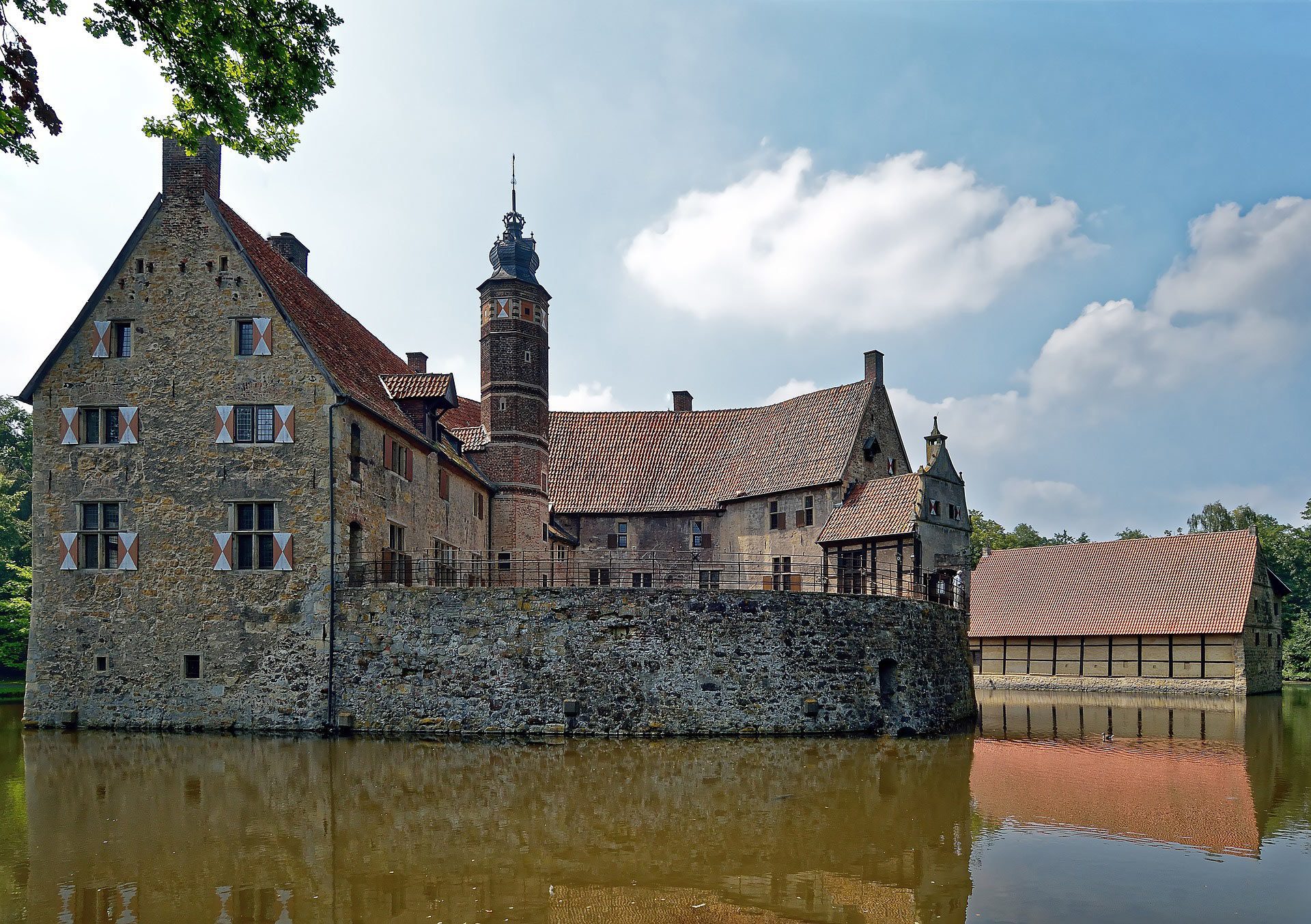
The outer defensive courtyard contains the business and farm buildings. The main building is a horseshoe-shaped three-story structure with heavy outer wall. Its inner courtyard is closed off by the chapel and a lower defense wall. A castle keep is missing, having been removed during Renaissance renovations.
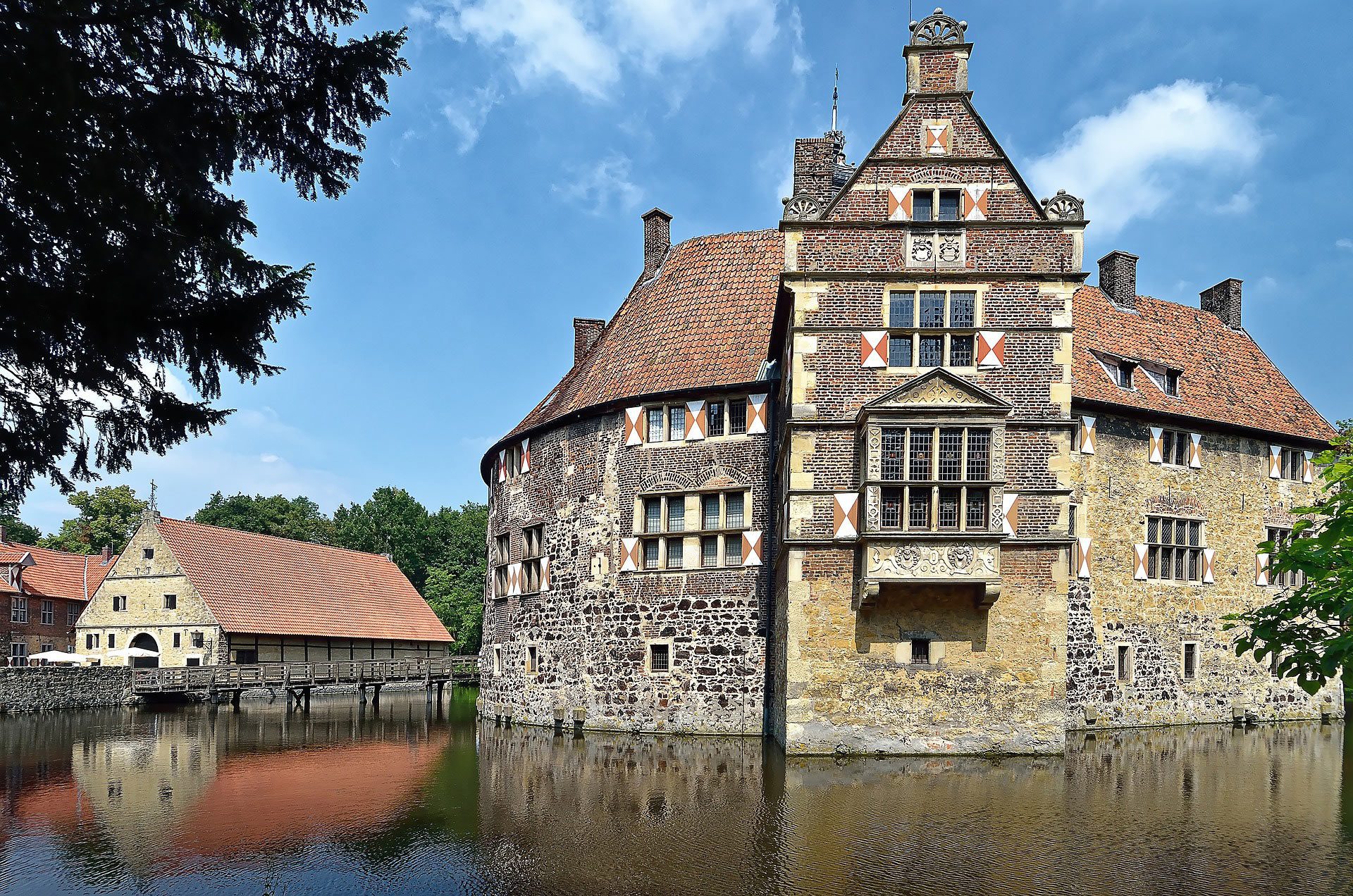
Fire destroyed the castle in 1521. Rebuilding took place on the existing foundation. Windows and the addition of a large bay made the castle more livable but diminished its defensive character. The whole site however retains the character of a feudal age moated castle. Damage from air attack during World War II was minor.
Vischering Castle houses the Münsterlandmuseum, an exhibit on knighthood for children, as well as a cafe-restaurant. It serves as a cultural center for Kreis Coesfeld. Visiting hours are provided in the first link below. Viewing the outside is possible at all times. The second link provides a more detailed chronology of the castle in German.
Source: Wikipedia (mixed/partial)
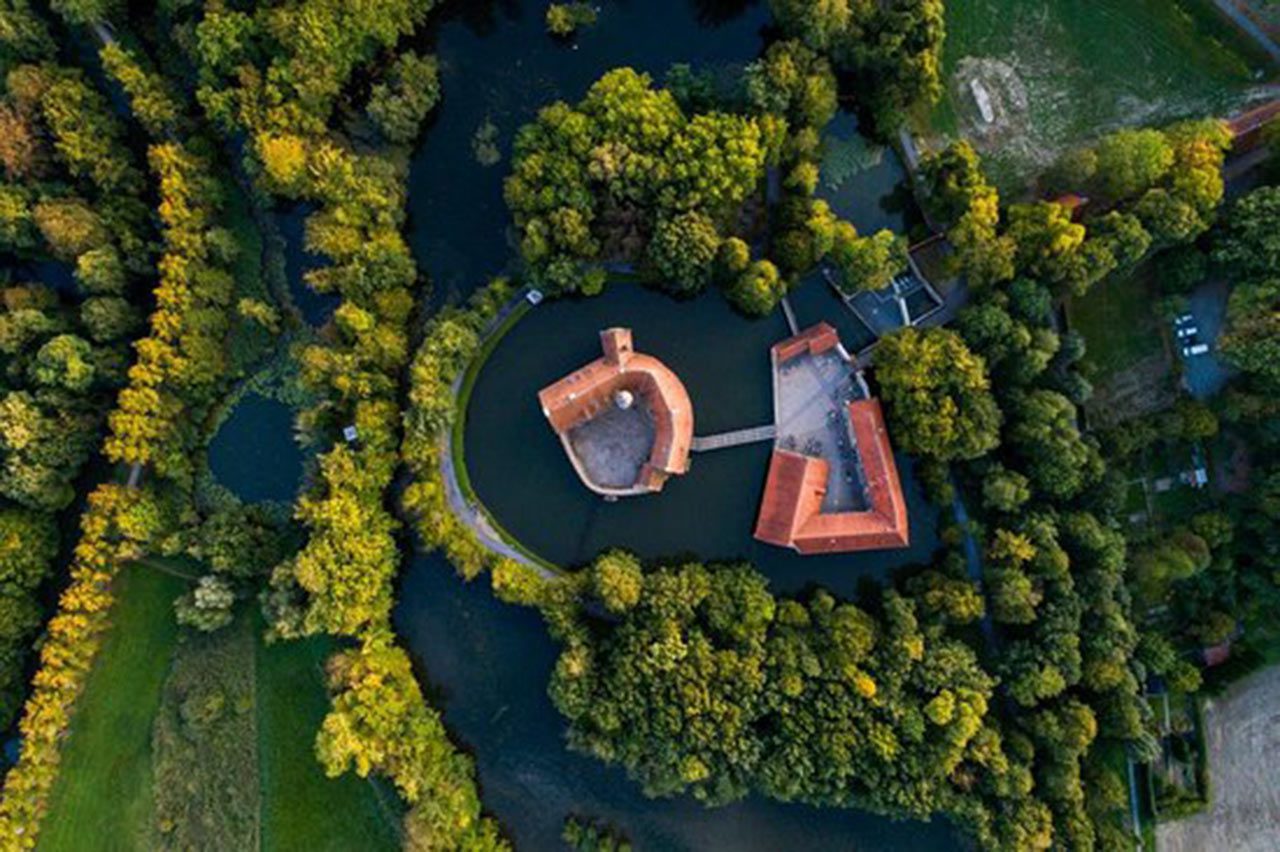
Trakai Castle is located on the island of Lake Galve in Lithuania. The construction of the stone castle began in the XIV century and was completed in 1409 when they made the last finishes. Currently the castle is an important cultural center that hosts numerous concerts, events and festivals.
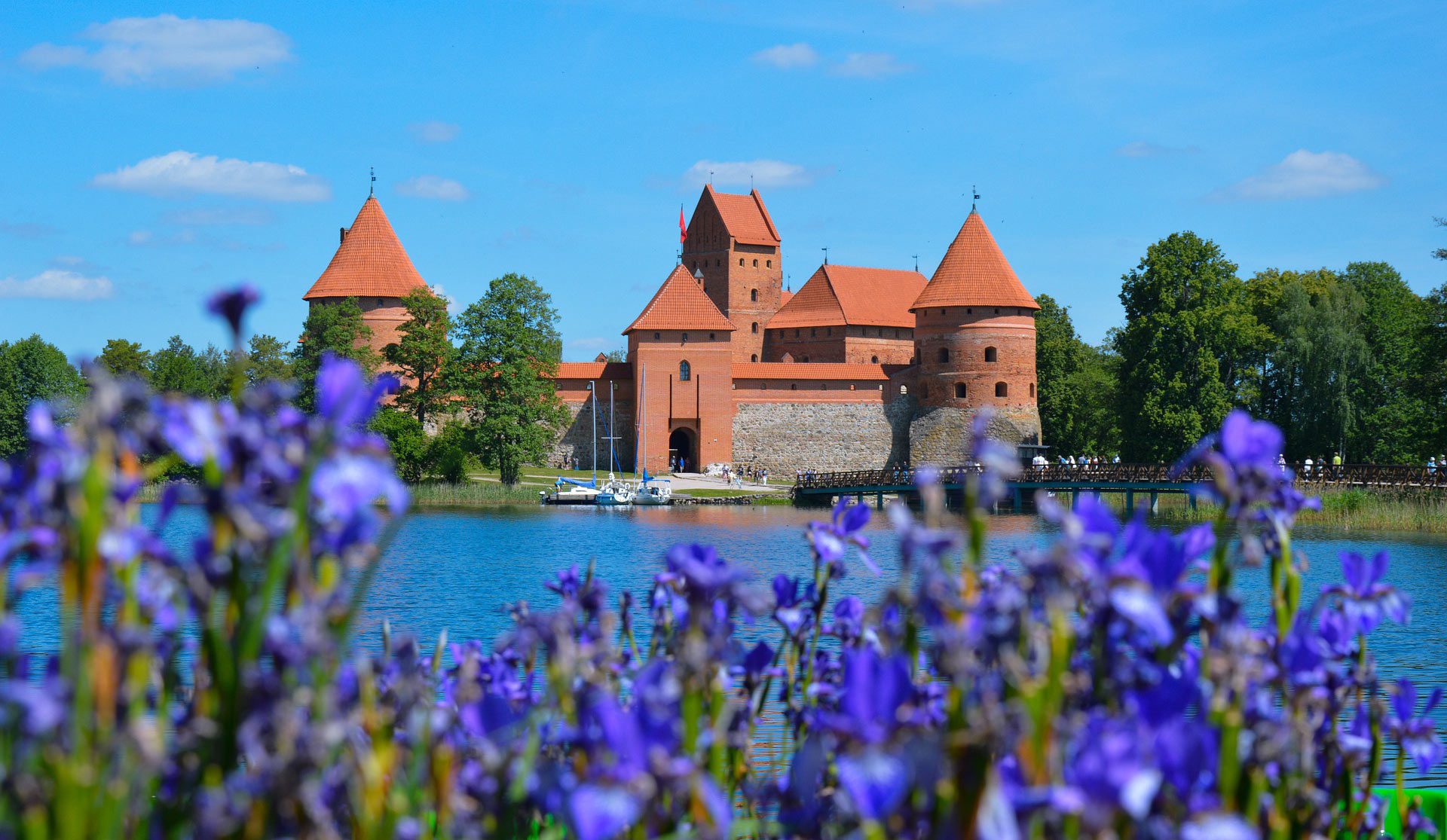
Trakai is considered to be the most beautiful monument of Lithuania. Since 1962, in the castle was opened a museum. Trakai Castle attracts about 300,000 visitors annually.
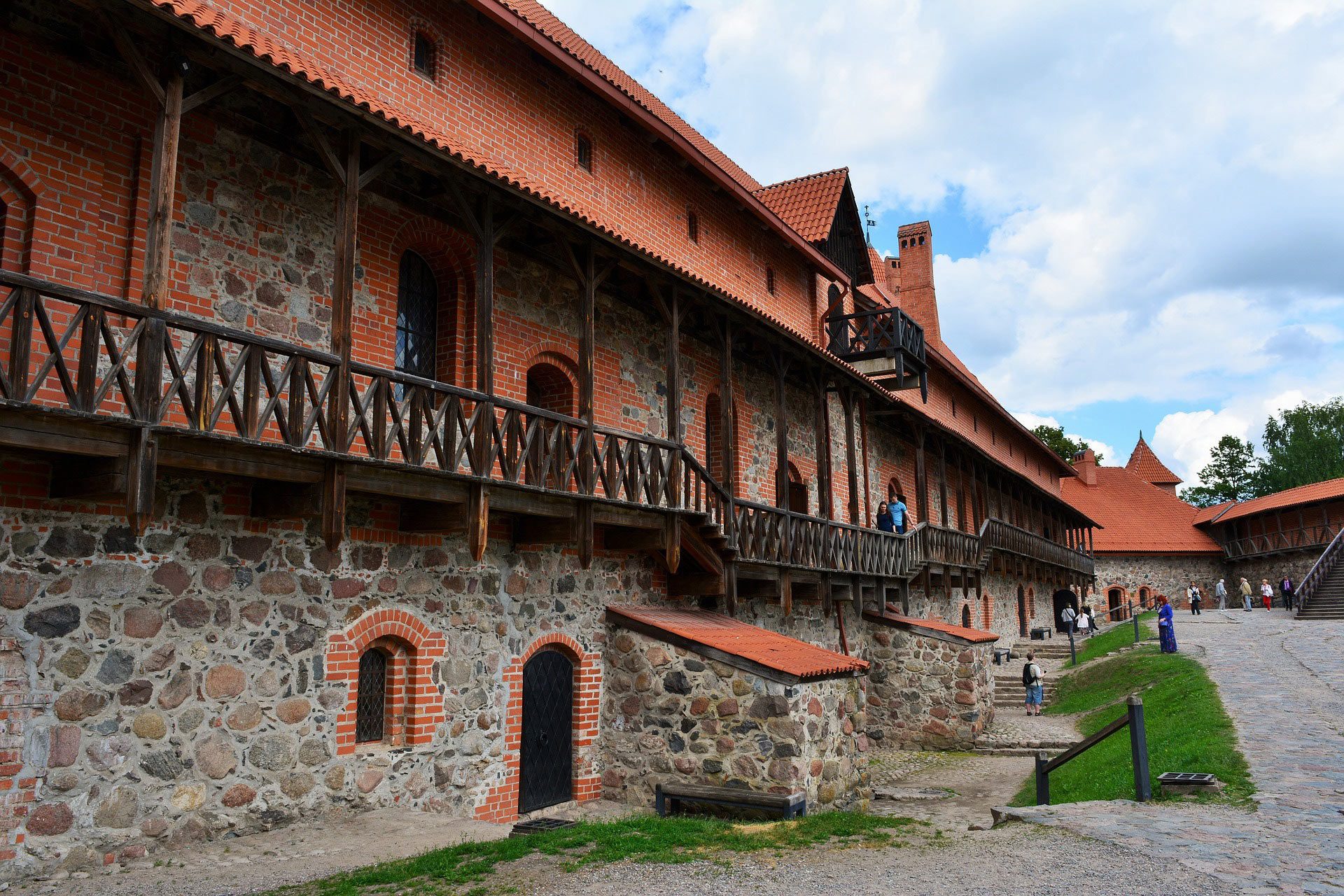
Cervena Lhota Castle is located at 20 km northwest of Jindrichuv Hradec in southern Bohemia, Czech Republic. The renaissance building attracts thousands of tourists annually.
The name Cervena Lhota means “red village”, a name derived from the red roof. The castle has two floors and is divided into four wings. In the middle of the castle there is a small yard. A stone bridge built in 1622 connects the castle to the pond shores replacing the original movable bridges.
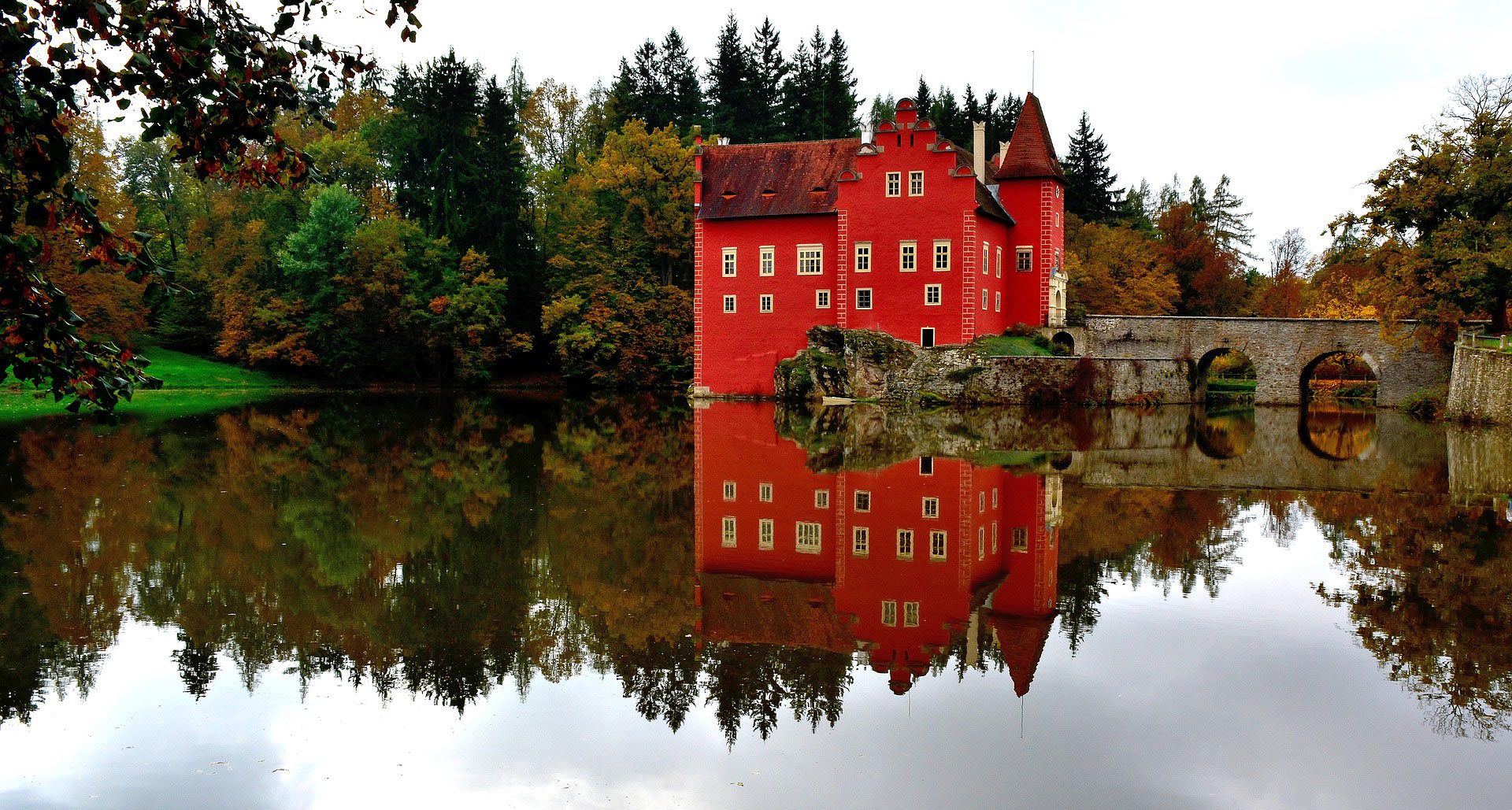
Photo Credits: Daniel Černík from Pixabay
The southern side of the pond is surrounded by a dense forest that forms a green curtain behind the castle. A circular path beautifully bordered stretches around the pond. In summer it is a pleasure to surf boat on the pond; boats can be rented at a center near the castle.
Červená Lhota a château in Červená Lhota village of the Pluhův Žďár municipality, in the South Bohemian Region, Czech Republic. It lies about 20 kilometres north-west of Jindřichův Hradec. It stands at the middle of a lake on a rocky island.
Officially the Tower of Saint Vincent (Portuguese: Torre de São Vicente) is a 16th-century fortification located in Lisbon that served as a point of embarkation and disembarkation for Portuguese explorers and as a ceremonial gateway to Lisbon. It was built during the height of the Portuguese Renaissance, and is a prominent example of the Portuguese Manueline style, but it also incorporates hints of other architectural styles. The structure was built from lioz limestone and is composed of a bastion and a 30-metre (98.4 ft), four-story tower.
Since 1983, the tower has been a UNESCO World Heritage Site, along with the Jerónimos Monastery. It is often portrayed as a symbol of Europe's Age of Discoveries and as a metonym for Portugal or Lisbon, given its landmark status. It has incorrectly been stated that the tower was built in the middle of the Tagus and now sits near the shore because the river was redirected after the 1755 Lisbon earthquake. In fact, the tower was built on a small island in the Tagus river near the Lisbon shore.Wikipedia Tweet
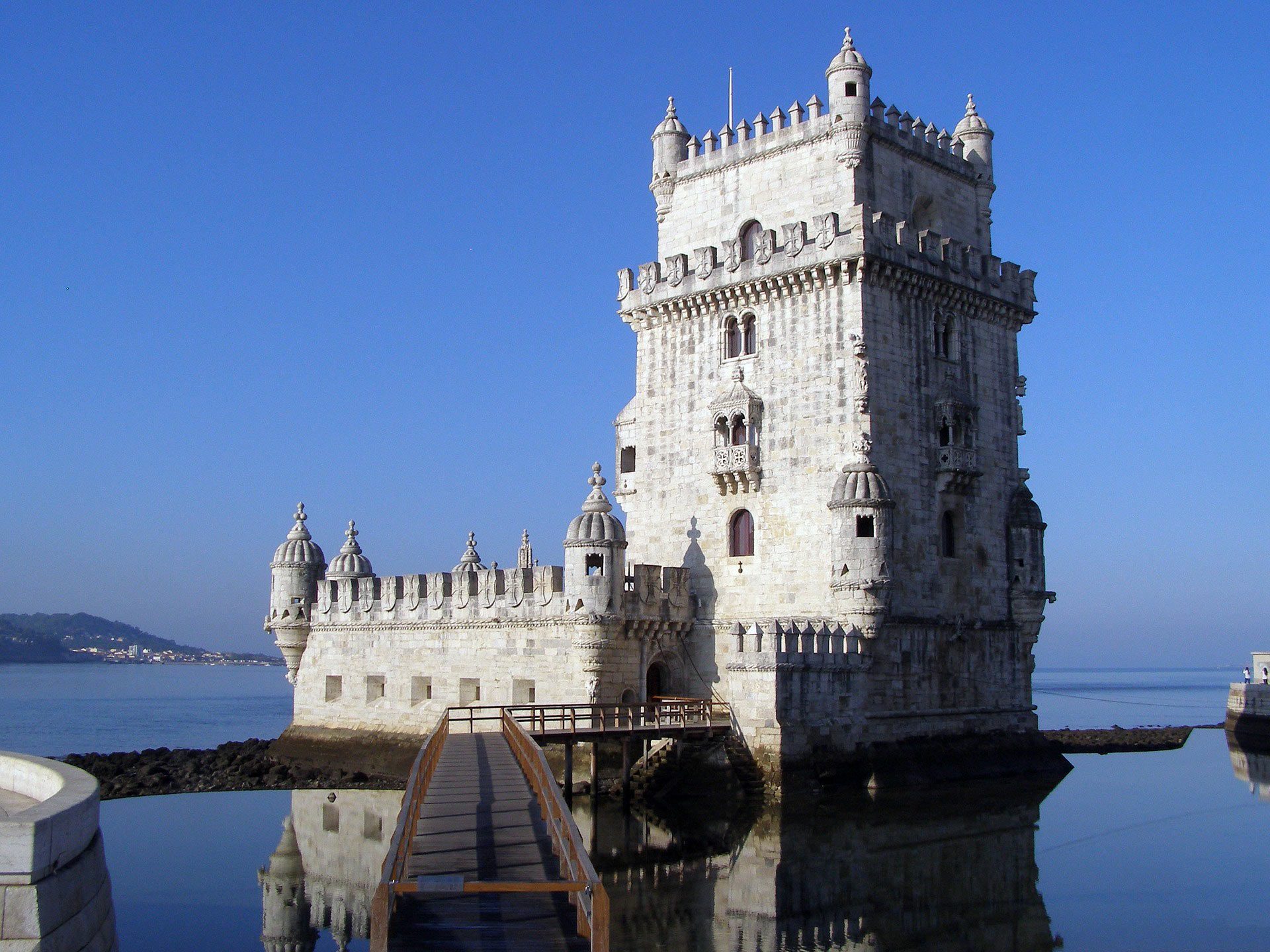
Photo Credits: Arvid Olson from Pixabay
The Belém Tower is situated on the northern bank of the Tagus River in the civil parish of Santa Maria de Belém, municipality of Lisbon, accessible at the western end of the Avenida de Brasília by a small bridge. Nearby are the Jeronimos Monastery to the east and the Forte do Bom Sucesso to the west, while to the north are the tower Governor’s residence, the old Governor’s residence for the Bom Successo fort, and the Chapel of São Jerónimo.
The Belem Tower is isolated along the riverbank, between the dock of Bom Sucesso and Pedrouços, on a basaltic outcropping of rocks belonging to the geomorphological volcanic complex of Lisboa-Mafra. Although various guides have claimed that the tower was built in the middle of the Tagus, and now sits near the shore after the 1755 earthquake redirected the river, they are incorrect.
The Portuguese Ministry of Culture and the Institute of Architectural Heritage indicate that the tower was constructed on a small island near the bank of the Tagus, opposite the shore of Restelo. As development extended the shoreline progressively, more and more of the northern bank crept southwards into the Tagus, the tower becoming integrated into the riverbank over time.
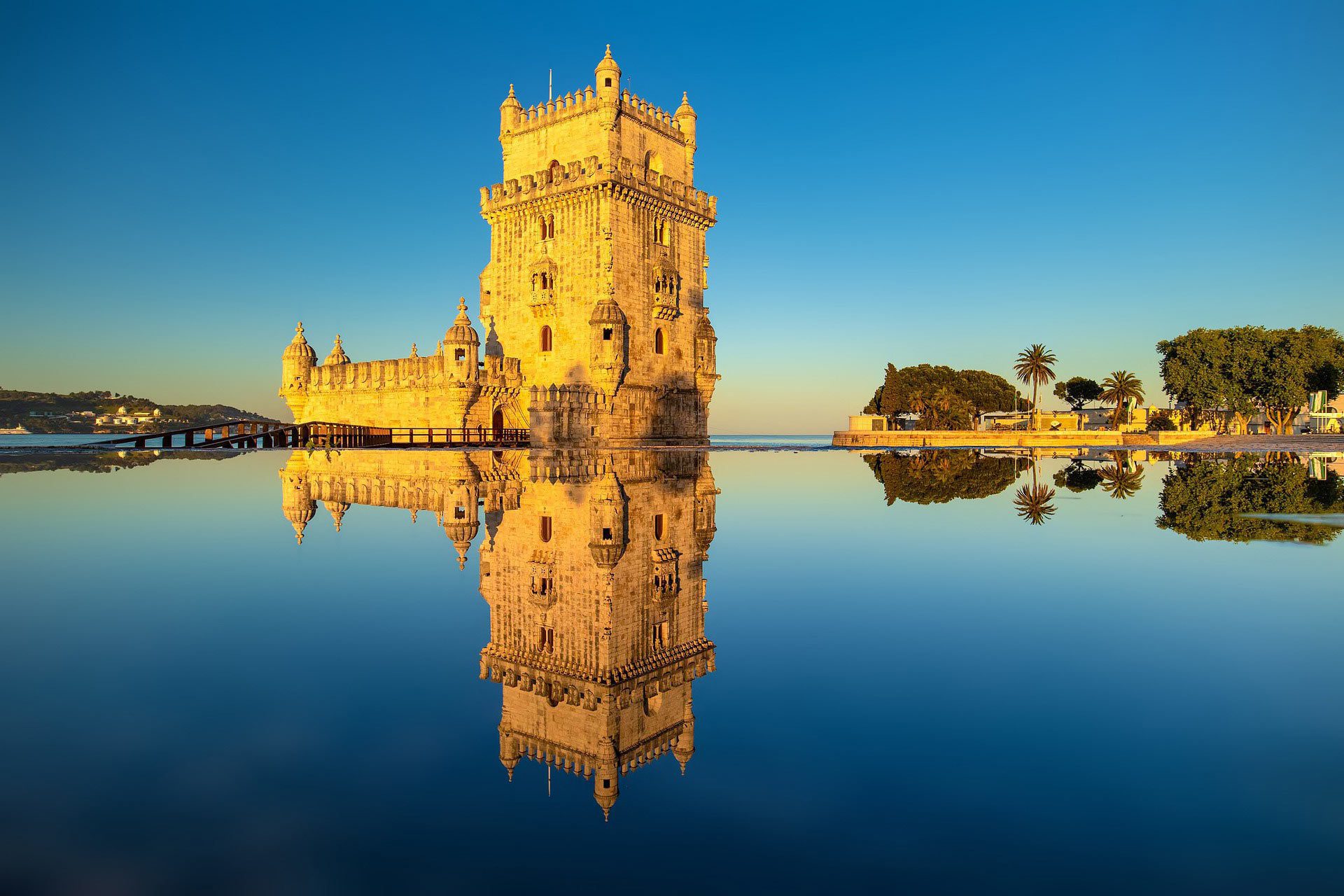
Photo Credits: Julius Silver from Pixabay
The 16th-century tower is considered one of the principal works of the Portuguese Late Gothic Manueline style. This is especially apparent in its elaborate rib vaulting, crosses of the Order of Christ, armillary spheres and twisted rope, common to the nautically inspired organic Manueline style

